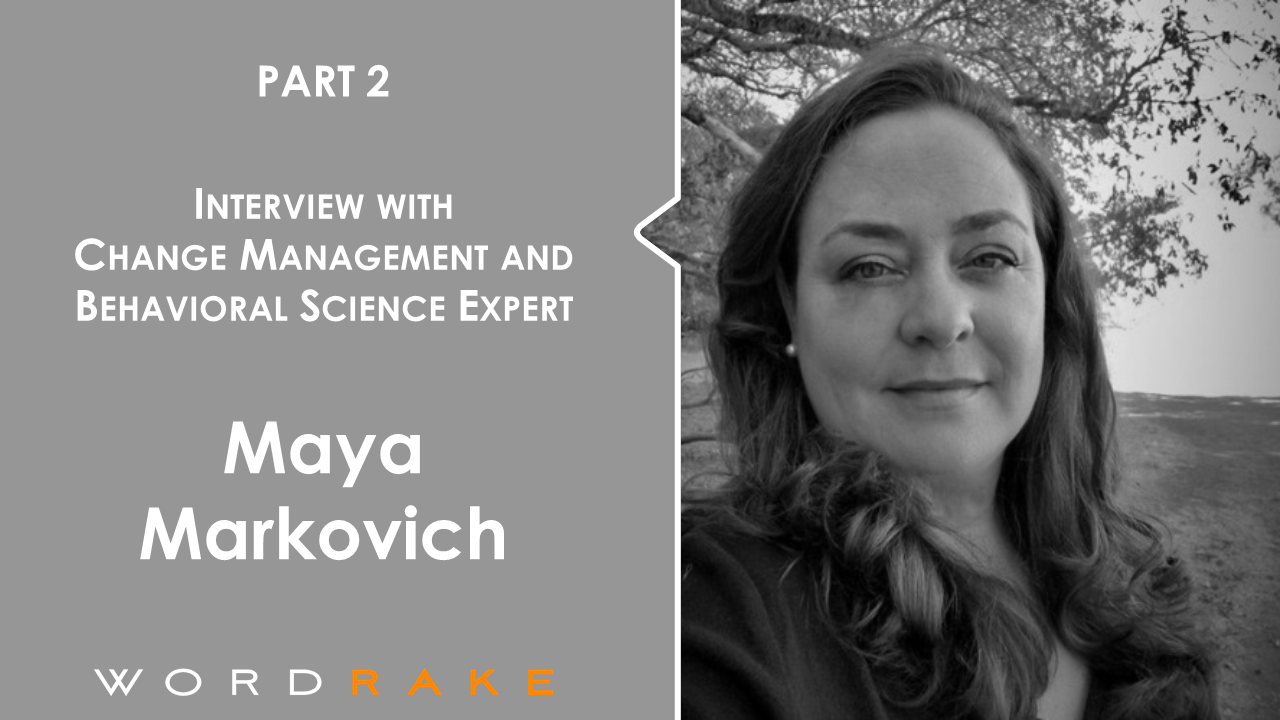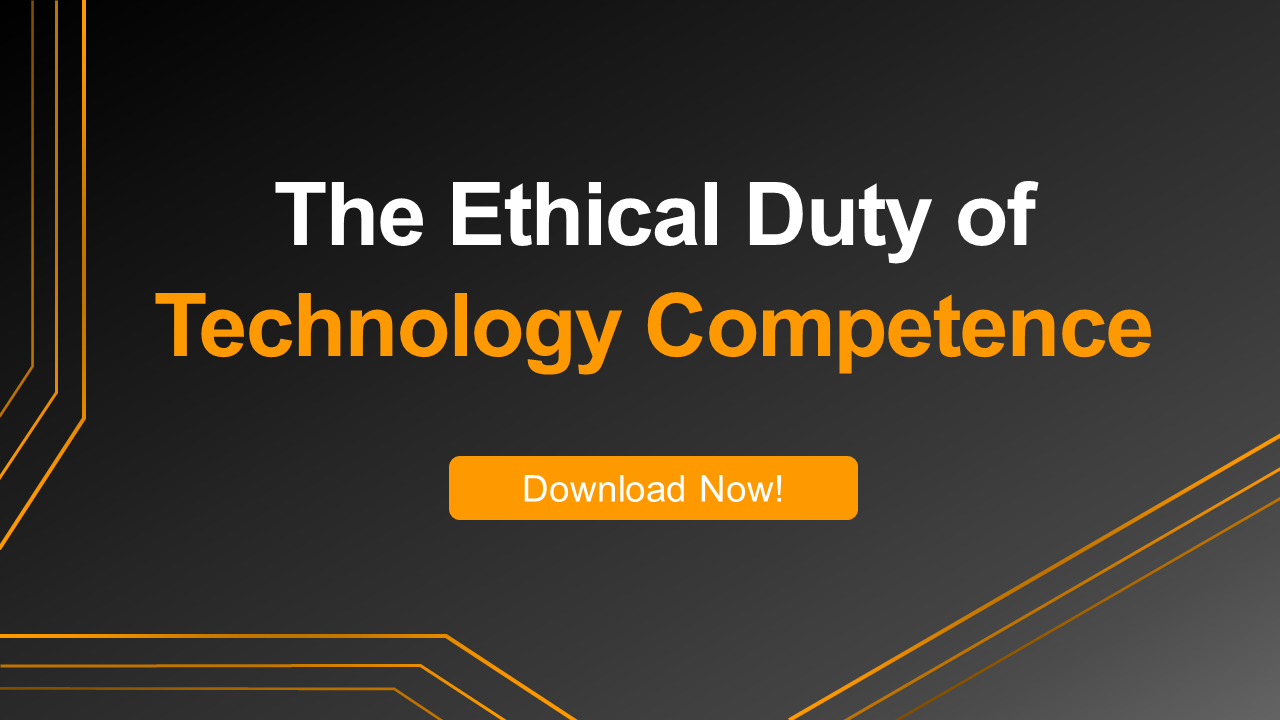Part 2: Change Management in Law Firms
Convincing people to embrace change is the biggest challenge of change management. It requires a combination of structural changes that reward change, cultural changes that encourage it, and individuals who are open to new approaches. If any elements are overlooked, change efforts are unlikely to succeed.
In Part 2 of this three-part series, change management expert Maya Markovich confronts the structural barriers and disincentives to change in the legal profession. But it’s not all bleak. Maya also offers small, straightforward change management strategies we can use to make change stick. Read on for Maya’s informative interview.
How do you incentivize people to seek out better ways to work?
It’s not necessarily the act of changing that is difficult, but rather recognizing the value of change—which must be embraced from leadership all the way down to each person affected.
To create a workplace that welcomes change and creative thinking about new ways to deliver client service, leaders must consciously model change and communicate its value. It starts with providing a safe place for employees to ask questions and recognize the possibilities of working in a different way and supporting that new approach structurally.
Most environments offer opportunities to “nudge” employee behavior by making small changes to the context in which decisions are made, to improve outcomes. Doing this, rather than trying to entirely change how people think, is a central theme in behavioral economics.
What small change management strategies can tech advocates apply in the legal business context?
Change management of a particular initiative is proactively managing the points between idea and outcome. It doesn’t have to be a rigid discipline, but a few core principles can almost always be applied:
- thoughtfully anticipate impacts and potentially defensive behavior
- gather insights from all stakeholders – not just the decision-maker
- reassure your team of what will not change
- set expectations
- evaluate risk
- measure your success
Even by just shifting your mindset to understanding that change is really tough for humans, and asking these questions in your team without getting hung up on specific stages or resources, you’ll begin to see the benefit.
Which lawyers are most likely to embrace change?
On an individual level, lawyers who understand that legal expertise is only one facet of the services they provide, and that they are no longer the only game in town, are more likely to grasp the necessity of finding new business processes and ways to deliver value to clients in a rapidly shifting marketplace. There’s a wealth of opportunity (not to mention urgency) to collaborate, scale, productize, and more—once you see the state of the industry clearly. From there, it’s a matter of acknowledging your professional challenges and prioritizing them. Choose just one to get started and consider how it could be improved with technology and/or adjusting the business process.
What are everyday aspects of legal practice that seem sticky? How does behavioral economics influence that?
Change is daunting because humans often perceive (consciously or otherwise) that it represents an inherent loss of some kind. At minimum, it requires significant alteration to one’s daily routine, to which some may fear they won’t be able to adapt. Change can also represent an existential threat to identity, legitimacy, or locus of control, and provoke emotional defensive reactions.
The tradition-rich legal industry is even more susceptible to these dynamics because it’s designed to stand on precedence, it’s not user or client-centric, and lawyers tend to view their work product as bespoke, impossible to replicate or automate, and charge accordingly. Established legal professionals have a strong psychological and economic stake in maintaining the status quo—they’ve invested years of their lives into these personal and professional structures.
As hard as it is for one person to overcome fear of change, we’re dealing with an entire industry going through the process simultaneously, with varying levels of acceptance, grief, and motivation to adapt.
There’s a presumption among change advocates that billable hours hinder tech adoption and discourage efficiency. Do you believe that’s true?
Regardless of the leaps and bounds made in the field of legal technology, many firms are reluctant to reevaluate fee structures, and the productivity paradox continues to constrain industry development.
Because of the billable hour framework, lawyers who use technology to streamline tasks—which makes for a happier client but a less happy partner—can be put in the impossible position of choosing between what’s best for their client and what’s best for their own advancement.
Because lawyers are trained to think of their time in 6-minute increments, the issue can also run deeper. A stretched associate may think twice about spending 1.7 hours at dinner with friends—or 2.2 hours if they are close friends—instead of working toward her billable hour target. Less balance ensues, and faster burnout.
Moreover, the billable hour system tends to stifle larger, more strategic projects and creative thinking, which are essential for applying behavioral economics principles to better understand the decision-making processes of your clients and develop unique solutions based on their needs.
Assuming we can’t change the billable hour system, what can firms do to encourage creative, strategic, and efficiency-enhancing change?
Firms need internal mechanisms to recognize and reward activities that help the firm separate itself from the competition. One way to plug this gap is to introduce an “innovation hour” as credit towards billable hour requirements.
At Dentons, lawyers can spend time on activities like exploring new technology, considering new ways to streamline routine tasks, and talking with clients and internal stakeholders to find new ideas for incremental revenue streams or new services. Assigning real value to these types of activities at the same level as traditional client work sends the message that change is not only good, but rewarded. When that happens, you see more grassroots enthusiasm, psychological safety, and comfort with trying and failing without judgment.
Some significant strides are being made to address these issues, and external market pressures such as insourcing and ALSPs may well accelerate this trend, but the industry still has a long way to go to loosen the constraints of the traditional practice of law and change how lawyers are currently overloaded and incentivized.
In Part 3, Maya shows how you can create a culture where change and innovation will thrive. It will be available tomorrow at 6 AM Pacific.
About Maya Markovich
Before entering the legal tech industry in 2006, Maya Markovich worked in behavioral science, change management consulting and civil litigation. Since leaving the practice of law, she has honed her skills as a subject matter expert at the intersection of law, VC, and technology.
Maya currently leads the selection, development, launch, and implementation of external early-stage legal tech for Nextlaw Labs. She delivers next-generation technology, process, client, and business growth services across the globe for the Dentons ecosystem, including growth of legal tech startups in the portfolio of investment arm, Nextlaw Ventures. She aims to build future-proof methodologies and tech to advance the legal industry, its clients, and consumers via achievable, sustainable, and scalable design and implementation. Collaborating with legal tech communities and experts worldwide, she continually evolves Nextlaw Labs' partnership and investment strategies. She was named one of five “Influential Women of Legal Tech” by ILTA in 2020, a “Woman Leading Legal Tech” by The Technolawgist in 2019, and a “Woman of Legal Tech" by the ABA LTRC in 2018 for her work in encouraging, designing and implementing the future of the legal profession around the globe.






